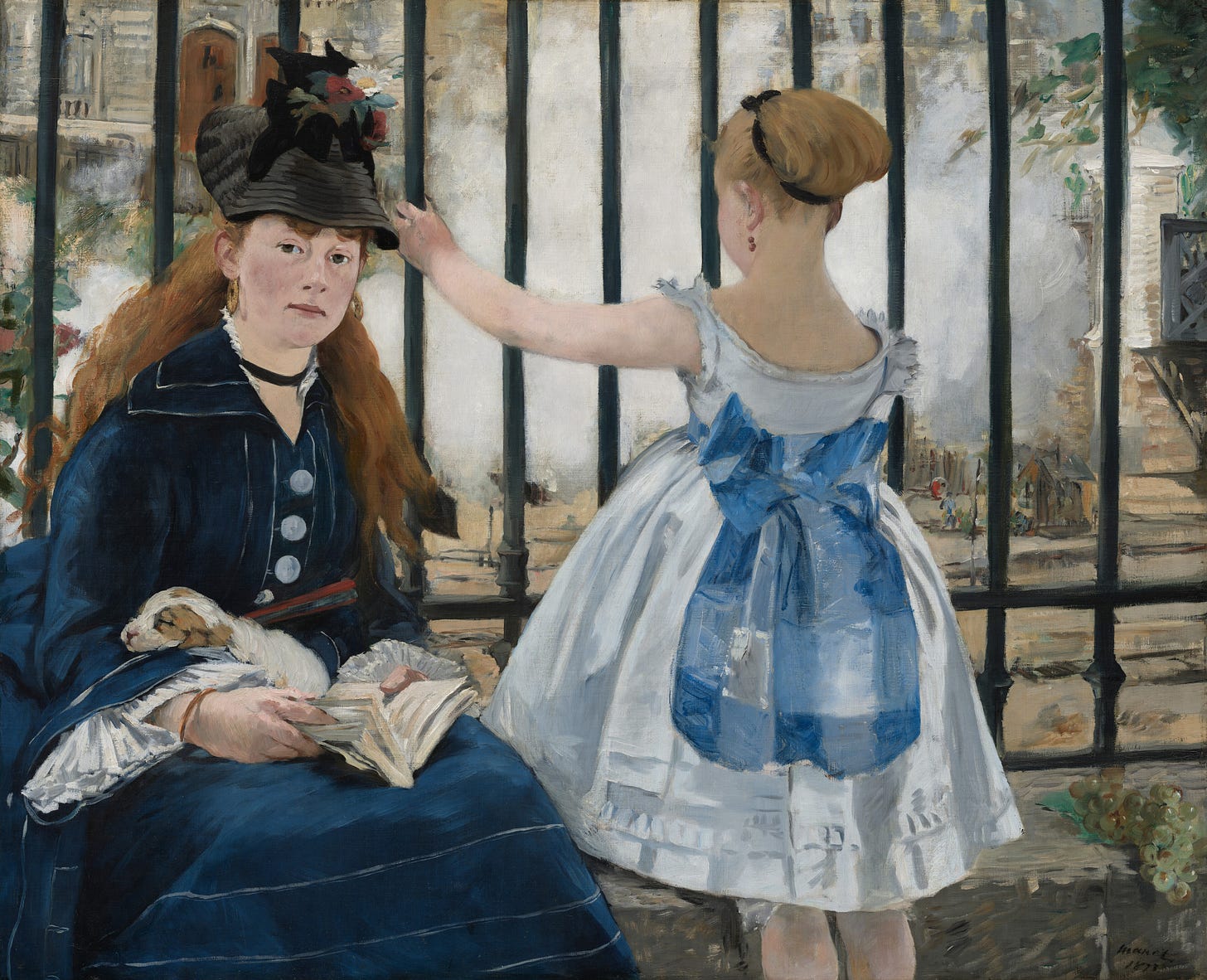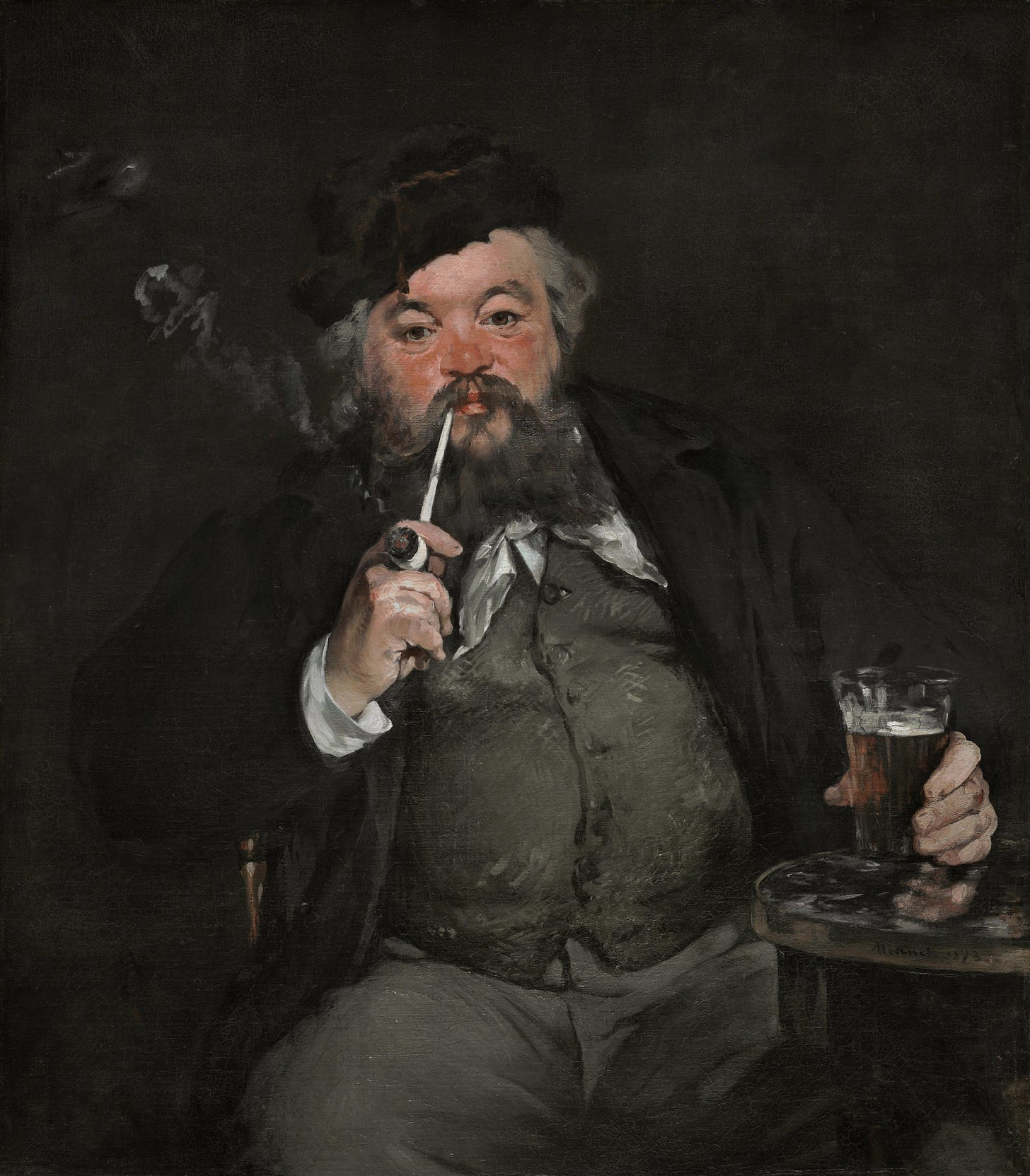A "War on Beauty": Manet and the Impressionists
Manet refused to participate in the First Impressionist Exhibition. Nevertheless, his name was inexorably tied to the Impressionists and their radical movement.
This essay is part of the series The Life of Édouard Manet. To read other essays in this series and gain access to the full archive, become a paid subscriber today:

In January of 1872, the art dealer Paul Durand-Ruel visited Édouard Manet in his studio on the rue de Saint-Petersbourg. He had recently purchased Manet’s Moonlight at the Port of Boulogne (1868) at the gallery of Alfred Stevens, and he was determined to grow his collection before another dealer outmaneuvered him.
Durand-Ruel was, after all, the man who made stars of the Barbizon landscape artists. The art scene in Paris was due for another shake-up. When he was living in London during the Franco-Prussian War, he was introduced to Claude Monet by a mutual friend, Charles-François Daubigny. Monet and his peers, which included artists like Camille Pissarro, Pierre-Auguste Renoir, and Edgar Degas, were clearly on the cutting edge of something big. Durand-Ruel wanted in.
It is for this reason that he invested so heavily in Édouard Manet’s paintings, much to the artist’s shock. On that frigid January day, Durand-Ruel purchased 35,000 francs-worth of paintings. A few days later, he purchased another group totaling at 16,000 francs. Manet would not get all the money right away, as Durand-Ruel paid artists in installments. Nevertheless, it was a victory. Manet eagerly connected Durand-Ruel with Degas, whose ballerinas and scenes of urban entertainment caught the dealer’s eye.
Things had shifted after the war. As Renoir later put it, “The golden age of the middle man, the buyer and seller, the shrewd dealer, now began.”1 Aristocrats no longer possessed a monopoly on wealth; an elite class of industrialists and merchants emerged with even greater force than they had before the war. While the Salon was still regarded as a central authority, dealers like Durand-Ruel saw an opportunity to expand their galleries and play a more direct role with clients.

However, Durand-Ruel was still taking a gamble on Monet, Manet, and their friends. France was a republic again, but the political climate was quite conservative, particularly after the chaos of the Paris Commune. As a result, the Salon was even more cautious about promoting any art that appeared too radical. The artists who would become known as the Impressionists continued drowning in a stream of rejection, and Durand-Ruel soon faced the prospect of staggering debt. How on earth was he going to sell all of these paintings, when the public was so immovable?
For Manet, at least, things seemed to be looking up. He managed to place two paintings in the 1873 Salon. His portrait of Berthe Morisot (Repose, 1871) received the usual sneers from the press, but his Le Bon Bock (above) was widely celebrated. Bock is a dark beer traditionally made in the spring, a time of renewal. While the image of a portly beer drinker smoking a pipe may seem too jarring a work of Realism for the Salon crowd, the timing worked out in Manet’s favor. Le Bon Bock was interpreted as emblematic of the new republic, a patriotic everyman (without the inconvenient radicalism of the Communards).


